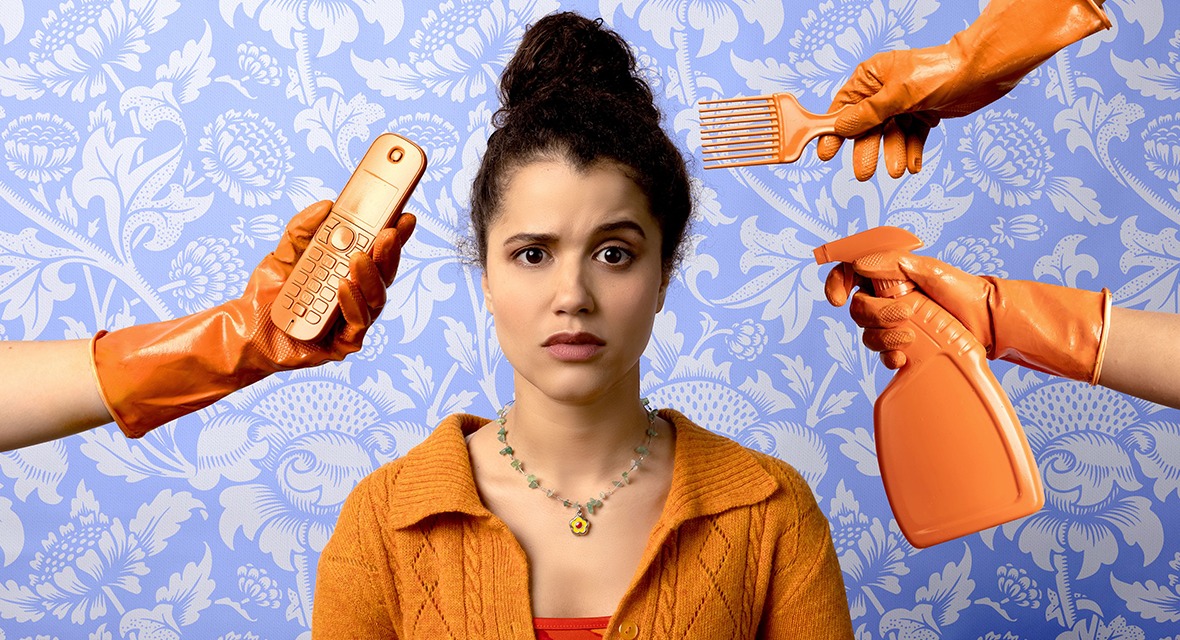
Review of Orange Thrower by Maryanne Taouk
Written by Kirsty Marillier
Directed by Zindzi Okenyo
Showing at Riverside’s National Theatre of Parramatta from 30 March – 2 April 2022
There was a lot of defiance in how I grew up, as the only Arab family in a regional Australian town. My dad would pray loudly in Aramaic in the front pew of Saint Mary’s church every Sunday, arms outstretched as Catholic eyes stabbed at us with judgement. My mum spent months nagging the deli workers at Franklins No Frills Supermarket to stock lamb’s small intestine for a pungent stuffed dish, ghamme. We would spit roast in the front yard and blare the mijwiz from the verandah. As a teenager I would feel my face grow hot as my parents stood their ground in their “otherness” – but they would straighten my shoulders and say, people “need to learn”. It was up to our neighbours to bend themselves around my parents’ iron spirit.
In Kirsty Marillier’s debut play Orange Thrower, showing at Riverside Theatre Parramatta until April 2, she brings to stage the battle with authenticity over assimilation that many migrant families face.
The play centres on Zadie, played by Gabriela Van Wyk, an uptight and serious young woman – concerned more with blending into expectations than allowing others space for freedom. Her character is explained best when the neighbourhood dictator, the aptly named Sharon (Callan Colley), mimics cutting off Zadie’s hair with garden shears, both laugh despite how terrifying the thought is. Like the oranges thrown at her family home – by a mysterious and most probably racist vandal – out of nowhere drops Zadie’s South African cousin Stekkie, fresh from the streets of Johannesburg.
Stekkie, played masterfully by Zindzi Okenyo gives contrast to Zadie’s high-strung perfectionism and becomes a kindred spirit for younger sister Vimsy. Stekkie is troubled and energetic but loving as she tends to Vimsy’s braids and reminisces about life in South Africa in the dusty family home. It’s Okenyo’s performance that cements Stekkie as a hopeful harbinger to Zadie’s cultural shame. The set, while beautifully highlighted with flashing LEDs shows the bleakness in Australian suburbia. The sameness of stucco cul-de-sacs where “Sharon’s” complain about leaving bins out after pick-up day. While the fruit wielding vandals may see the family as a neighbourhood problem – by the end it is the vibrancy of Zadie, Vimsy and what Stekkie represents which is the antidote.
Often when work by people of colour is produced a reviewer, most times a white man, will complain that the art isn’t for them, that the target audience is other young women of colour – but that dismissal is just what Marillier speaks to. How can they see the richness in our accented voices and the patterns in our liveliness if they close their eyes to our stories?
While it is important to see ourselves on stage, it’s time for the monochromatic lives of suburbia to be challenged. I have never seen my stocky Arab mum prouder than walking out of a discount supermarket with a brown paper bag full of intestines – and prouder still that the deli stocked her cut of offal right up until it closed in 2015. Sometimes, it is other people that need to learn.
